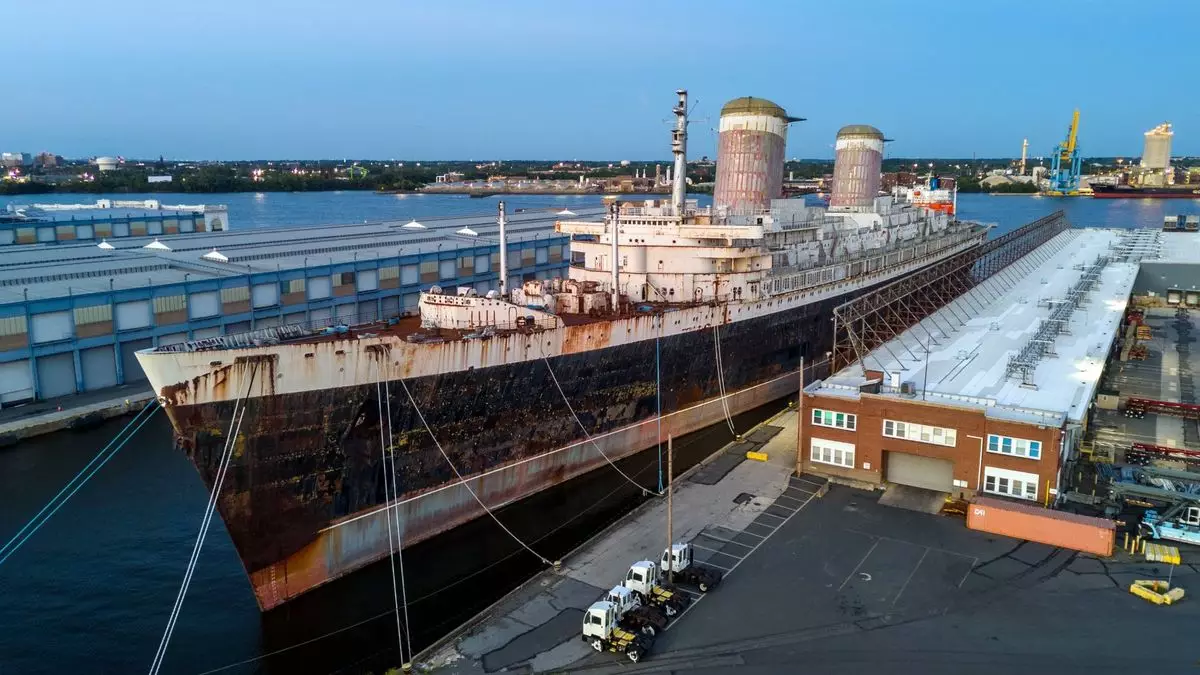The SS United States, an emblem of mid-20th-century maritime engineering and a symbol of American innovation, stands at a critical juncture as plans are underway to turn the majestic ocean liner into an artificial reef. The ship, once revered for its speed and luxury, has become a silent witness to both its illustrious past and uncertain future. Recent announcements from Destin-Fort Walton Beach and the SS United States Conservancy indicate a tentative agreement to repurpose the vessel for conservation purposes. This move, while being celebrated for its potential ecological benefits, also raises poignant questions about heritage, preservation, and the fate of historical entities in modern society.
As outlined in the agreement approved by the Board of County Commissioners in Okaloosa County, plans are in place to convert the SS United States into “the world’s largest artificial reef.” This ambitious project aims to provide a habitat for marine life while bolstering local tourism through diving and fishing opportunities. While this vision is certainly praiseworthy, it is crucial to consider the implications of such transformation. Stifling the ship’s heritage under a layer of seaweed and coral may be seen as both a practical solution for the aquatic environment and a tragic loss of a cultural landmark.
The conservancy’s ongoing efforts highlight a decade-long passion to find alternative uses for the vessel, from establishing it as a floating museum to converting it into a mixed-use destination. Yet, each endeavor has met with challenges, leading the ship closer to its prospective sinking. The transition from a grand ocean liner to a mere reef poses a bittersweet irony, encapsulating how modernity often sacrifices historical treasures at the altar of function and utility.
Originally launched in 1952 to service transatlantic voyages, the SS United States was a marvel of its time, faster than any ship before or since. At its peak, it could cross the ocean in a record-breaking three days and ten hours. Beyond its impressive speed, the ship served as a troop carrier with the capacity to transport 14,000 soldiers across vast distances without the need for refueling. However, with the advent of the jet age, the grand era of ocean liners dwindled, and the SS United States was eventually left to languish in a Philadelphia dock since 1996.
Over the past two decades, numerous attempts were made by cruise companies and organizations to revive the ship’s glory. Each plan, however, fizzled out—culminating in a series of disappointments that left the SS United States adrift in both a literal and metaphorical sense. Despite these setbacks, the conservancy has consistently stated its commitment to preserving the legacy and history embodied in the vessel, as evidenced by past restoration talks with major cruise lines, illuminating both the challenge and thirst for revitalizing such a cultural icon.
While the conversion of the SS United States into an artificial reef may serve ecological purposes, it does draw attention to the moral complexities surrounding such decisions. The transformation stands to offer essential habitats for various marine species, bolstering local fishing industries and tourism in Destin-Fort Walton Beach. Jennifer Adams, the area’s tourism director, noted that the vessel would be an exciting addition to the local underwater topography.
However, one must consider the balance between nature and history. As the ship faces this impending transformation, it invites the question: can ecological endeavors justify the erasure of cultural significance? The allure of sustainability must be weighed against the responsibility to honor and preserve the narratives encapsulated within historical structures. Ultimately, the fate of the SS United States represents more than just the closure of a chapter in maritime history but underscores a societal choice between ecological gain and cultural preservation.
The timeline for closing the deal remains tentative, influenced by ongoing legal mediation. Should the transformation proceed, the necessary cleaning and transport process is expected to stretch over a year and a half, with the conservancy estimating costs at around $10.1 million. While these statistics might seem daunting, they pale in comparison to the value of the legacy that could be lost forever.
As the SS United States prepares for what could be its final voyage, its story reflects a broader commentary on society’s relationship with heritage and environmental sustainability. The juxtaposition of turning the famed vessel into an artificial reef epitomizes the challenges we face—balancing the emotional pull of history with the pressing need for ecological consciousness. As we ponder such transformations, we must remain vigilant, ensuring that even as we embrace new realities, we don’t forget the timeless legacies that gave rise to them.


Leave a Reply